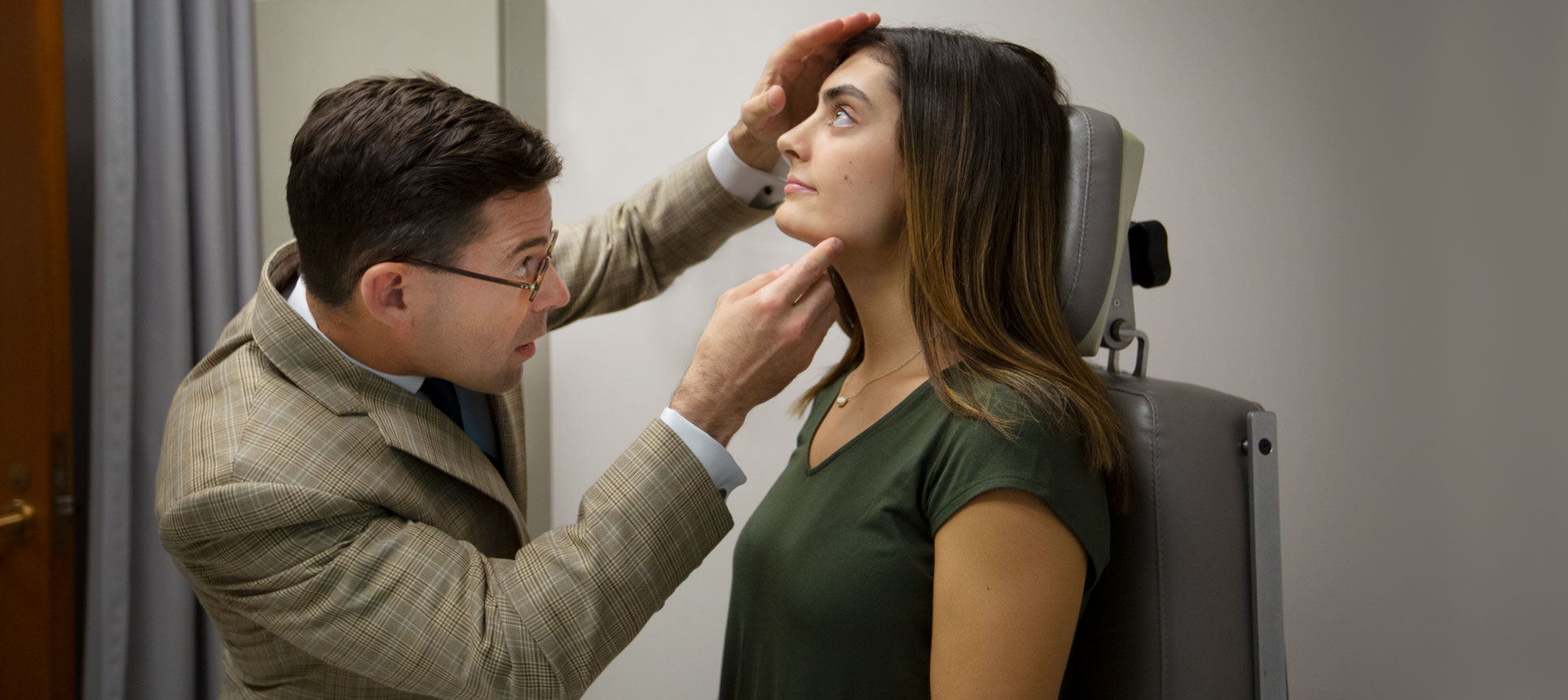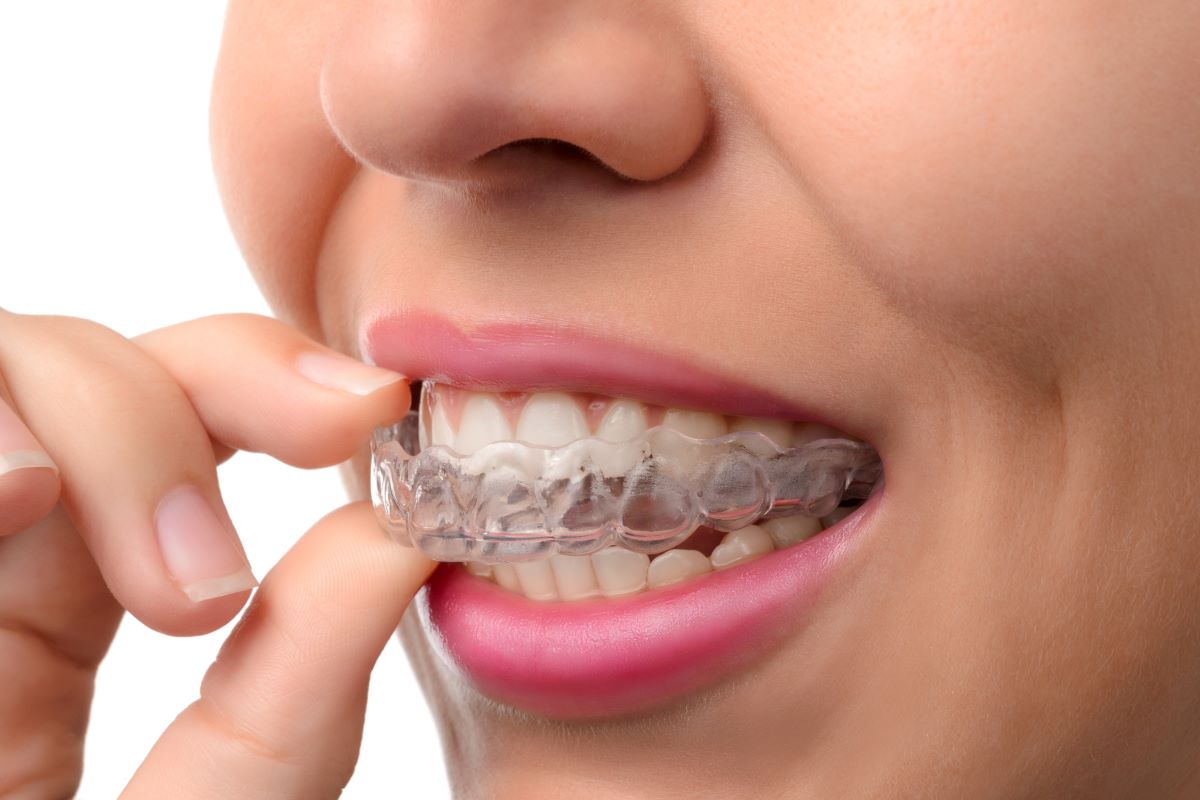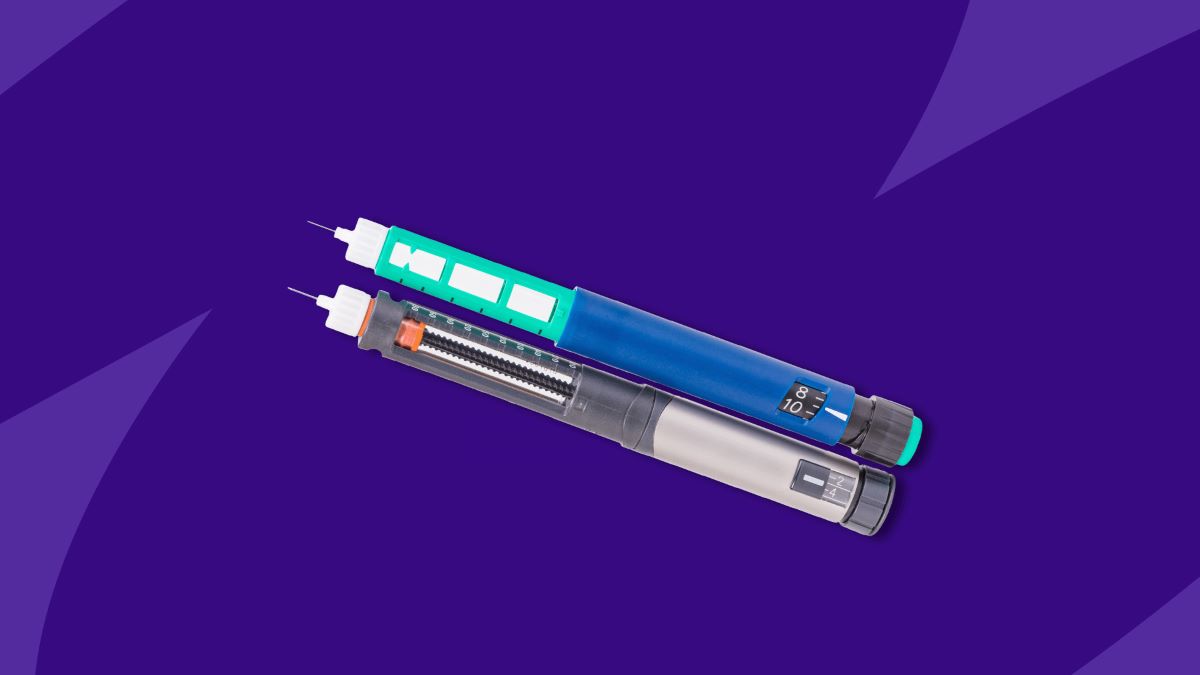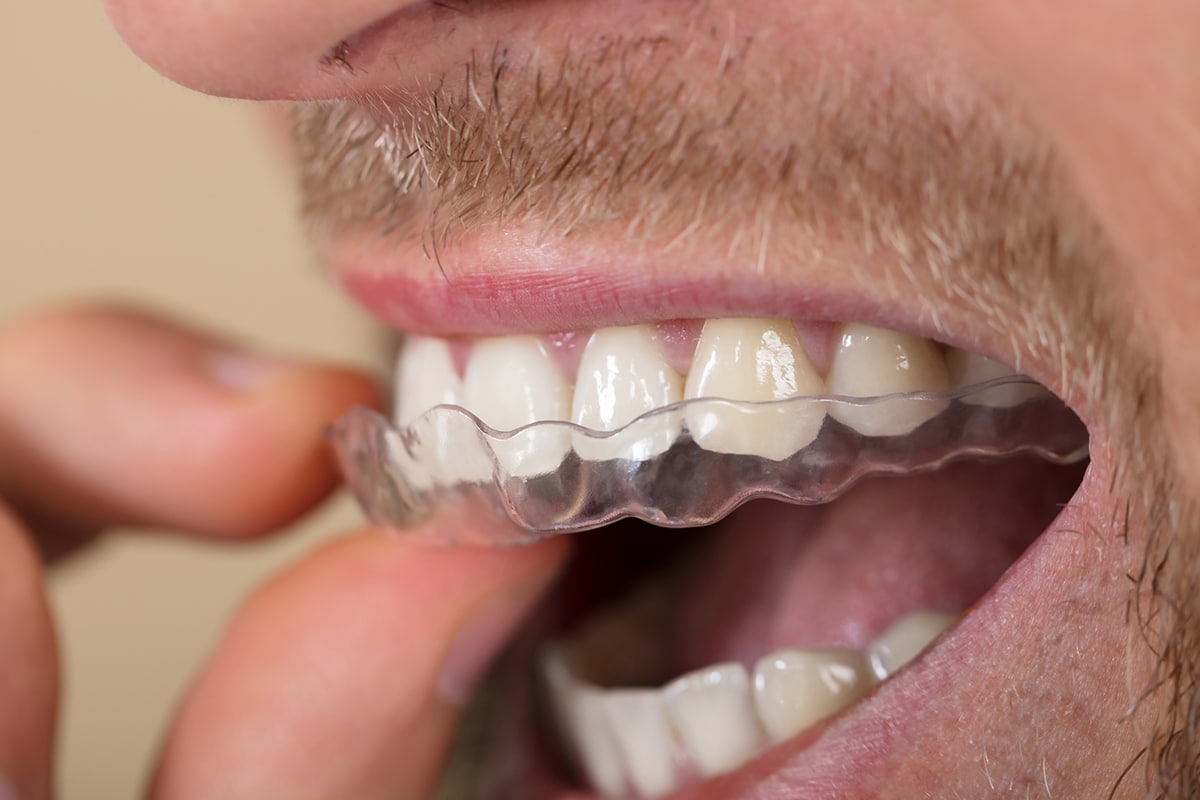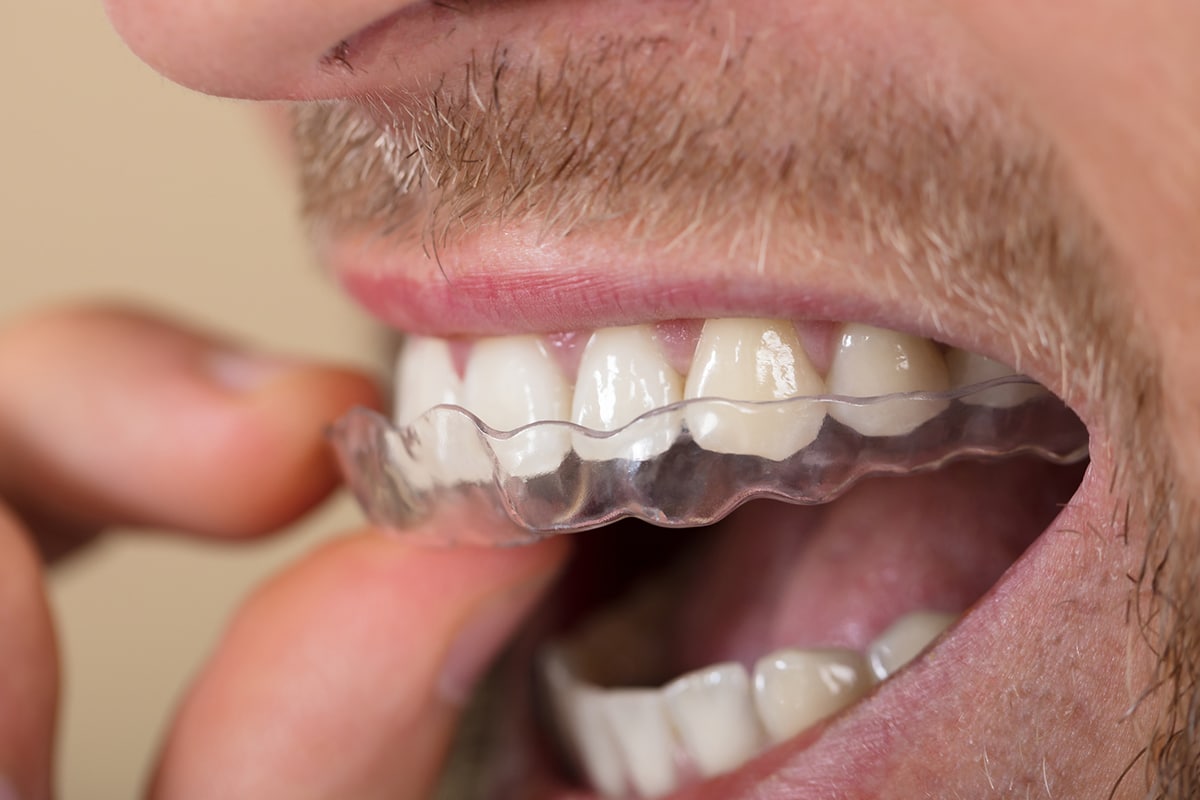

Finance
How To Get Invisalign Covered By Insurance
Published: November 10, 2023
Discover how you can finance your Invisalign treatment and get it covered by insurance. Explore options to make your dream smile more affordable and accessible.
(Many of the links in this article redirect to a specific reviewed product. Your purchase of these products through affiliate links helps to generate commission for LiveWell, at no extra cost. Learn more)
Table of Contents
Introduction
Welcome to the world of Invisalign, an innovative and discreet alternative to traditional metal braces. If you’re considering this orthodontic treatment to achieve a beautiful, straight smile, you may be wondering if your dental insurance will cover the cost. In this article, we’ll explore the steps you can take to get Invisalign covered by insurance.
Invisalign is a popular choice for individuals who want to correct misalignment issues without the discomfort and visibility of metal braces. These clear aligners are custom-made to gradually move your teeth into their proper position, offering a more comfortable and convenient orthodontic solution.
While Invisalign offers numerous benefits, such as being easily removable for eating and oral hygiene, it’s essential to understand that dental insurance coverage for this treatment may vary. Some insurance plans fully cover Invisalign, while others offer partial coverage or may not cover it at all.
Before delving into the specifics of getting Invisalign covered by insurance, it’s important to review your policy to understand the dental coverage you currently have. This knowledge will help you navigate the process effectively and minimize any potential surprises or out-of-pocket expenses.
Next, we’ll explore the different types of dental insurance coverage and what you should look out for when reviewing your policy. Additionally, we’ll provide some tips on finding an in-network Invisalign provider and discuss the importance of submitting a pre-authorization request to ensure coverage for your treatment.
Lastly, we’ll touch on ways to maximize your insurance benefits and options for appealing a denied claim. We understand that finances can play a significant role in the decision to pursue Invisalign, so we’ll also discuss alternative financing options if your insurance coverage falls short.
By following the steps outlined in this article, you’ll be better equipped to navigate the process of getting Invisalign covered by insurance. So let’s dive in and explore the world of Invisalign and insurance coverage, bringing you one step closer to achieving the smile of your dreams.
Understanding Invisalign
Invisalign is a modern orthodontic treatment that offers an alternative to traditional metal braces. It uses a series of clear, removable aligners to gradually move your teeth into their desired position. These aligners are custom-made to fit snugly over your teeth and are virtually invisible, making them a popular choice for individuals who desire a more discreet orthodontic treatment.
The process begins with a consultation with an orthodontist or dentist who is trained in Invisalign treatment. They will assess your dental needs and determine if Invisalign is a suitable option for you. If it is, they will take impressions or digital scans of your teeth and create a 3D model that will be used to design your customized treatment plan.
Once your aligners are ready, you will be instructed to wear each set of aligners for about two weeks, gradually progressing to the next set. This process continues until your teeth have shifted into their desired positions. The total treatment time can vary depending on the complexity of your case, but it typically ranges from 6 to 18 months.
One of the key advantages of Invisalign is its convenience and flexibility. The aligners can be easily removed for eating, brushing, and flossing, allowing you to maintain your oral hygiene routine without any restrictions. However, for the treatment to be effective, it is crucial to wear the aligners for 20 to 22 hours per day, only removing them when necessary.
Invisalign is suitable for various orthodontic concerns, including overcrowding, gaps between teeth, bite issues (such as an overbite or underbite), and crooked teeth. However, there may be certain cases where traditional braces are more appropriate. Your orthodontist or dentist will evaluate your specific needs and discuss the best treatment options for you.
It’s important to note that while Invisalign offers numerous benefits, it also requires commitment and diligence from the wearer. You will need to follow your treatment plan and attend regular check-ups with your orthodontist to ensure progress is being made and adjustments are made if necessary.
Now that we have a better understanding of Invisalign, let’s move on to exploring the different types of dental insurance coverage that may help with the cost of treatment.
Types of Dental Insurance Coverage
When it comes to dental insurance coverage for Invisalign, it’s important to understand the different types of coverage that may be available to you. Dental insurance plans generally fall into three main categories: preventative, basic, and major services coverage.
- Preventative Coverage: This type of coverage typically includes routine dental exams, cleanings, and X-rays. While Invisalign is considered an orthodontic treatment, it may be covered in some preventative plans if your dental insurance provider deems it necessary for dental health reasons. It’s important to review your policy carefully to determine if preventative coverage applies to Invisalign.
- Basic Coverage: Basic coverage often includes procedures such as fillings and extractions. While Invisalign treatment is more extensive than basic dental procedures, some insurance plans may provide partial coverage under this category. Again, it’s crucial to review your policy to understand the extent of coverage for orthodontic treatments.
- Major Services Coverage: Major services coverage typically includes more complex procedures such as crowns, bridges, and dentures. Invisalign treatment may fall under major services coverage, as it is a comprehensive orthodontic treatment. It’s important to carefully review your policy to determine if Invisalign is explicitly mentioned as a covered treatment.
Every dental insurance policy is different, and coverage for Invisalign can vary significantly between plans. It’s important to carefully review your policy documents or contact your insurance provider directly to understand the specifics of your coverage.
In addition to these three main types of coverage, some dental insurance plans may offer orthodontic coverage as a separate category. Orthodontic coverage often includes traditional braces but may also include coverage for alternative treatments such as Invisalign. If your plan includes orthodontic coverage, it’s essential to determine if Invisalign is specifically mentioned as a covered treatment option.
Understanding the type of dental insurance coverage you have will provide valuable insight into the extent to which Invisalign may be covered. Next, we’ll explore how to check your insurance policy for details on Invisalign coverage.
Checking Your Insurance Policy
Before moving forward with Invisalign treatment, it’s crucial to thoroughly review your dental insurance policy to determine the extent of coverage for orthodontic treatments, including Invisalign. Here are some steps you can take to check your insurance policy:
- Review the policy documents: Start by carefully reading through your dental insurance policy documents. Look for sections that discuss orthodontic coverage or specifically mention Invisalign. Pay attention to any limitations, waiting periods, or exclusions that may apply.
- Contact your insurance provider: If you have any questions or need clarification on your policy’s coverage for Invisalign, it’s best to contact your insurance provider directly. They can provide detailed information about your specific plan and explain any terms or conditions that may affect coverage.
- Ask about orthodontic coverage: Inquire about whether your policy includes orthodontic coverage as a separate category. If it does, ask if Invisalign is listed as a covered treatment option.
- Check for pre-authorization requirements: Some insurance plans may require pre-authorization for orthodontic treatments like Invisalign. Ask your insurance provider if pre-authorization is necessary, and if so, what steps you need to take to obtain it.
- Verify coverage details: Inquire about the percentage of coverage provided for orthodontic treatments like Invisalign. It’s essential to understand if your insurance will cover a portion of the costs or if you will be responsible for a significant portion of the expenses.
By thoroughly reviewing your insurance policy and clarifying any questions with your insurance provider, you will have a better understanding of the specific coverage details for Invisalign. Next, we’ll discuss how to find an in-network provider, which is crucial for maximizing your insurance benefits and minimizing out-of-pocket costs.
Finding an In-Network Provider
When it comes to getting Invisalign covered by insurance, finding an in-network provider is essential. An in-network provider is a dentist or orthodontist who has a contract with your dental insurance provider to provide services at a pre-negotiated rate. This means that by going to an in-network provider, you can potentially receive increased coverage and lower out-of-pocket costs for your Invisalign treatment.
To find an in-network provider for Invisalign, you can follow these steps:
- Contact your insurance provider: Reach out to your dental insurance provider and ask for a list of in-network providers that offer Invisalign. They will typically provide you with a directory or website where you can search for providers in your area.
- Utilize the online provider search tool: Many dental insurance websites have a search tool that allows you to find in-network providers based on your location and the specific treatment you are seeking, such as Invisalign. Use this tool to generate a list of potential providers in your area.
- Ask for recommendations: Seek recommendations from friends, family, or colleagues who may have undergone Invisalign treatment. They can provide insights into their experience with a particular provider and whether they were satisfied with their treatment outcome.
- Schedule consultations: Once you have a list of potential in-network providers, schedule consultations with a few of them to discuss your Invisalign treatment plan, evaluate their experience and qualifications, and determine if you feel comfortable with their approach.
- Verify in-network status: Before committing to a provider, verify their in-network status with your insurance company. This will ensure that you can maximize your insurance benefits and avoid any surprises in terms of coverage.
By choosing an in-network provider, you can take advantage of the negotiated rates and coverage benefits offered by your dental insurance plan. This can help alleviate some of the financial burdens associated with Invisalign treatment and make it more affordable for you.
Now that you have found an in-network provider for your Invisalign treatment, the next step is to submit a pre-authorization request to your insurance provider. This process helps ensure that you have a clearer understanding of the coverage you can expect and allows you to plan your treatment accordingly. We’ll explore this process in the next section.
Submitting a Pre-Authorization Request
Submitting a pre-authorization request is an essential step in getting Invisalign covered by insurance. This process allows you to get approval from your dental insurance provider before starting the treatment, ensuring that you have a clear understanding of the coverage and potential costs involved.
Here are the steps to submit a pre-authorization request for Invisalign:
- Contact your insurance provider: Reach out to your dental insurance provider and inform them that you are planning to undergo Invisalign treatment. They will provide you with the necessary forms or information on how to initiate the pre-authorization process.
- Gather required documentation: Typically, pre-authorization requests require specific information, such as the treatment plan provided by your in-network provider. Make sure to gather all the necessary documentation, including X-rays, photographs, and any other supporting materials requested by your insurance provider.
- Complete the pre-authorization form: Fill out the pre-authorization form provided by your insurance provider. Be thorough in providing accurate information about the treatment plan and the estimated cost of the Invisalign treatment.
- Submit the pre-authorization request: Send the completed pre-authorization form, along with any supporting documents, to your insurance provider. Be sure to keep copies of all the documents for your records.
- Follow up with your insurance provider: After submitting the pre-authorization request, follow up with your insurance provider to ensure that they have received it and that it is being processed. Keep track of any reference numbers or information provided by the insurance company for future reference.
Once your pre-authorization request is approved, you will have a clearer idea of the coverage and any out-of-pocket expenses you may be responsible for. This information will help you plan and budget for your Invisalign treatment accordingly.
It’s important to note that the pre-authorization process may take some time, so it’s advisable to start it well in advance of your planned treatment start date. This will allow you to address any potential issues and have a confirmed understanding of your coverage before beginning your Invisalign journey.
In the next section, we’ll explore ways to maximize your insurance benefits to make the most of your coverage for Invisalign treatment.
Maximizing Your Insurance Benefits
When it comes to getting Invisalign covered by insurance, there are several strategies you can employ to maximize your insurance benefits and reduce your out-of-pocket costs. Here are some tips to help you make the most of your dental insurance coverage:
- Stay in-network: As mentioned earlier, choosing an in-network provider is crucial. By staying in-network, you can take advantage of the negotiated rates and coverage benefits provided by your dental insurance plan.
- Follow the recommended treatment plan: It’s important to adhere to the treatment plan outlined by your Invisalign provider. Deviating from the plan may result in your insurance provider denying coverage for any additional treatment required.
- Utilize remaining insurance benefits: If you have remaining dental insurance benefits for the year, try to schedule your Invisalign treatment during that time to maximize your coverage and minimize out-of-pocket costs.
- Combine dental and medical insurance: In some cases, medical insurance may cover a portion of orthodontic treatment if it is deemed medically necessary. Check with your insurance providers to see if you can combine dental and medical coverage for Invisalign treatment.
- Flexible Spending Accounts (FSAs) or Health Savings Accounts (HSAs): If you have FSAs or HSAs, consider utilizing these accounts to pay for your Invisalign treatment. These accounts allow you to set aside pre-tax dollars for medical expenses, including orthodontic treatments.
- Be proactive with claims: Make sure to submit your Invisalign claims to your insurance provider promptly and accurately. Follow up with the insurance company if there are any delays or issues with claim processing.
- Keep track of expenses: Maintain a record of all expenses related to your Invisalign treatment. This includes invoices, receipts, and any correspondence with your insurance provider. This documentation will be useful if you need to appeal a denied claim or if there are any discrepancies in coverage.
By employing these strategies, you can optimize your insurance benefits and minimize the financial burden associated with Invisalign treatment. However, it’s important to remember that each insurance plan is unique, and coverage may vary. Therefore, it’s crucial to refer to your specific policy and consult with your insurance provider for personalized guidance.
In the next section, we’ll discuss what to do in the event that your insurance claim for Invisalign treatment is denied and how to appeal the decision.
Appealing a Denied Claim
If your insurance claim for Invisalign treatment is denied, don’t lose hope. You have the right to appeal the decision and present your case to the insurance provider. Here are the steps you can take to appeal a denied claim:
- Understand the denial: Carefully review the denial notice provided by your insurance provider. Look for specific reasons why the claim was denied, such as lack of coverage, missing documentation, or incorrect coding.
- Clarify coverage details: Contact your insurance provider to clarify the coverage details for Invisalign. Make sure you fully understand the parameters and requirements for coverage, and ask for any additional information or documentation they may require.
- Compile supporting documents: Gather all relevant documentation to support your appeal. This may include treatment plans, X-rays, photographs, statements from your Invisalign provider, and any other evidence that demonstrates the medical necessity of the treatment.
- Write an appeal letter: Prepare a well-written appeal letter that clearly states your case. Provide a concise summary of your situation, explain why you believe the claim was wrongly denied, and include any supporting documentation.
- Submit the appeal: Send your appeal letter, along with all supporting documents, to your insurance provider. Make sure to follow their specific instructions for submitting appeals and keep copies of everything for your records.
- Follow up: After submitting your appeal, follow up with your insurance provider to ensure they have received it. Ask for a timeline for their review process and any additional information or steps they may require.
- Consider professional help: If your initial appeal is denied, you may want to seek assistance from a dental or medical billing advocate. These professionals specialize in navigating insurance claims and can provide guidance and support to increase your chances of a successful appeal.
Remember to remain persistent and advocate for yourself throughout the appeals process. Keep track of all communications, including dates, names of representatives spoken to, and any reference numbers or case IDs provided. This documentation will be important if you need to escalate your appeal or seek further assistance.
While the appeals process can be lengthy and challenging, it’s worth pursuing to potentially reverse a denied claim and receive the coverage you are entitled to for your Invisalign treatment.
In some cases, even after exhausting the appeals process, the insurance claim may still be denied. If this happens, don’t be discouraged. There are alternative financing options available that can help you manage the cost of Invisalign treatment, which we’ll explore in the next section.
Alternative Financing Options
If your dental insurance does not fully cover the cost of Invisalign or if your claim is denied, there are alternative financing options available to help make the treatment more affordable. Here are some options to consider:
- Payment plans: Many Invisalign providers offer flexible payment plans that allow you to spread out the cost of treatment over a period of time. This can be particularly helpful if you are unable to pay the full amount upfront.
- CareCredit: CareCredit is a healthcare credit card that can be used to cover the cost of various medical and dental procedures, including Invisalign. It offers flexible payment plans and often has introductory 0% interest financing options.
- Health Savings Account (HSA) or Flexible Spending Account (FSA): If you have an HSA or FSA, you can use the funds from these accounts to pay for Invisalign treatment. These accounts allow you to set aside pre-tax dollars for medical expenses, providing a tax-advantaged way to cover the cost.
- Dental discount plans: Dental discount plans, also known as dental savings plans, offer discounted rates for various dental treatments, including orthodontics. These plans typically require an annual membership fee and provide reduced fees when visiting participating providers.
- Personal loans or credit cards: If the cost of Invisalign is a significant financial burden, you may consider applying for a personal loan or using a low-interest credit card to finance the treatment. Be sure to carefully review the terms and interest rates before making a decision.
Before selecting an alternative financing option, it’s important to assess your financial situation and choose the option that best fits your needs. Consider factors such as interest rates, repayment terms, and any additional fees associated with the financing option.
Additionally, discuss your financial concerns with your Invisalign provider. They may have recommendations or be able to work with you to develop a payment plan that suits your budget.
Remember to prioritize your oral health and long-term well-being. Invisalign is an investment in not only your smile, but also your overall oral health. Explore all available options to find an approach that allows you to pursue treatment without compromising your financial stability.
Now that we have discussed alternative financing options, let’s wrap up the article.
Conclusion
Getting Invisalign covered by insurance may require some proactive steps, but it is definitely possible. By understanding your insurance coverage, checking your policy, finding an in-network provider, and submitting a pre-authorization request, you can increase the chances of receiving coverage for your Invisalign treatment. Additionally, maximizing your insurance benefits, appealing a denied claim, and exploring alternative financing options can help make the treatment more affordable and manageable.
Remember, each dental insurance policy is unique, and coverage for Invisalign can vary. Be sure to review your policy documents and clarify any questions or concerns with your insurance provider. Understanding the specifics of your coverage will empower you to navigate the process effectively and minimize any potential surprises or out-of-pocket expenses.
Invisalign offers a discreet and convenient orthodontic solution that can help you achieve the smile of your dreams. Whether your insurance fully covers the treatment or you need to explore alternative financing options, prioritizing your oral health and well-being is essential. Don’t let financial considerations discourage you from pursuing a treatment that can have a lasting positive impact on your confidence and overall dental health.
Consult with an Invisalign provider to discuss your treatment plan, determine your insurance coverage, and explore financing options. They can guide you through the process, provide valuable insights, and help create a personalized plan that fits your needs and budget.
Remember, every step you take toward getting Invisalign covered by insurance brings you closer to that beautiful, straight smile you’ve always wanted. Stay informed, be proactive, and don’t hesitate to seek assistance or second opinions if needed.
Now that you have a comprehensive understanding of how to navigate the insurance process for Invisalign, you can confidently embark on your journey towards a straighter smile. Good luck!

